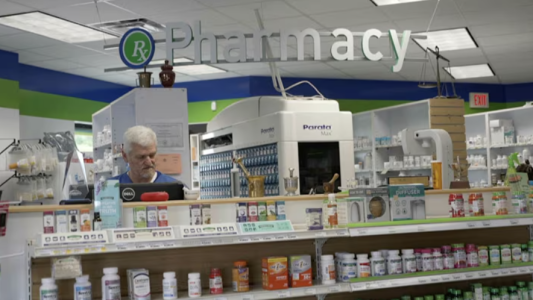A familiar pharmacy chain is struggling—and it’s asking customers not to jump ship
- Replies 0
Most shoppers don’t expect their neighborhood pharmacy to suddenly disappear.
But when companies face mounting debt and legal pressure, even the most routine errands can get complicated.
One well-known pharmacy chain is now closing dozens of stores and asking customers for a favor in return.
And it all comes down to a behind-the-scenes struggle that most people never see.
Rite Aid has filed for bankruptcy for the second time in two years.
The company, once a giant in the drugstore space, had $8.6 billion in debt as of its first bankruptcy filing in October 2023.
While it restructured and emerged in September 2024, cutting that total by $2 billion and shedding 800 stores, it wasn’t enough.
Court documents filed this month reveal that financial pressures in the retail healthcare sector continue to mount.

Rite Aid’s latest bankruptcy comes amid legal battles related to the opioid crisis and shifting consumer spending habits.
Analysts also point to strong competition from rivals like CVS and Walgreens, which have advanced their digital and in-store operations.
Despite the challenges, Rite Aid has secured $1.94 billion in financing to keep stores running while it attempts another restructuring.
The company still operates over 1,200 locations across 15 states.
In a surprising move, Rite Aid is asking customers not to transfer their prescriptions—at least not yet.
While the company says it will help transfer medications to avoid care disruptions, it’s hoping many patients will stick with them.
The concern, outlined in court filings, is that a disorderly sale of assets could overwhelm other pharmacies with a sudden flood of transfer requests.
Rite Aid estimates it fills over 100 million prescriptions annually, which could severely strain competitor systems.
The company explained that other pharmacies would need time to receive and integrate prescriptions, secure medication supplies, and staff up to meet demand.
“This is no small task,” the company wrote in its bankruptcy filing.
For now, Rite Aid says it is still in conversations with potential buyers, and plans to sell off underperforming stores.
At least 68 store closures have already been confirmed across California, Oregon, Pennsylvania, Virginia, and other states.
In some locations, stores are being closed with the acknowledgment that they have “limited to no value,” according to court documents.
Still, Rite Aid promises that employees will continue receiving pay during bankruptcy proceedings.
The company also says it will try to retain staff where possible after the restructuring.
It’s a tough message for loyal shoppers—but an even tougher moment for the employees caught in the middle.
Some experts believe this shake-up could have long-term benefits for the pharmacy industry.
Joe Camberato, CEO of National Business Capital, says that if it pushes competitors to improve—with things like automated prescription filling and better employee support—then something good may come from Rite Aid’s downfall.
Walgreens, for example, is already working on advanced prescription automation that Rite Aid hadn’t yet implemented.
Rite Aid’s second collapse, Camberato says, might be the wake-up call the industry needs.
Read more:

Would you stay loyal to your pharmacy through financial trouble, or would you move your prescriptions for peace of mind? Have you been affected by a store closing near you? Share your experience in the comments—your voice might help others navigate the same situation.
But when companies face mounting debt and legal pressure, even the most routine errands can get complicated.
One well-known pharmacy chain is now closing dozens of stores and asking customers for a favor in return.
And it all comes down to a behind-the-scenes struggle that most people never see.
Rite Aid has filed for bankruptcy for the second time in two years.
The company, once a giant in the drugstore space, had $8.6 billion in debt as of its first bankruptcy filing in October 2023.
While it restructured and emerged in September 2024, cutting that total by $2 billion and shedding 800 stores, it wasn’t enough.
Court documents filed this month reveal that financial pressures in the retail healthcare sector continue to mount.

Rite Aid has filed for bankruptcy for the second time in two years. Image source: WKBW TV | Buffalo, NY / YouTube
Rite Aid’s latest bankruptcy comes amid legal battles related to the opioid crisis and shifting consumer spending habits.
Analysts also point to strong competition from rivals like CVS and Walgreens, which have advanced their digital and in-store operations.
Despite the challenges, Rite Aid has secured $1.94 billion in financing to keep stores running while it attempts another restructuring.
The company still operates over 1,200 locations across 15 states.
In a surprising move, Rite Aid is asking customers not to transfer their prescriptions—at least not yet.
While the company says it will help transfer medications to avoid care disruptions, it’s hoping many patients will stick with them.
The concern, outlined in court filings, is that a disorderly sale of assets could overwhelm other pharmacies with a sudden flood of transfer requests.
Rite Aid estimates it fills over 100 million prescriptions annually, which could severely strain competitor systems.
The company explained that other pharmacies would need time to receive and integrate prescriptions, secure medication supplies, and staff up to meet demand.
“This is no small task,” the company wrote in its bankruptcy filing.
For now, Rite Aid says it is still in conversations with potential buyers, and plans to sell off underperforming stores.
At least 68 store closures have already been confirmed across California, Oregon, Pennsylvania, Virginia, and other states.
In some locations, stores are being closed with the acknowledgment that they have “limited to no value,” according to court documents.
Still, Rite Aid promises that employees will continue receiving pay during bankruptcy proceedings.
The company also says it will try to retain staff where possible after the restructuring.
It’s a tough message for loyal shoppers—but an even tougher moment for the employees caught in the middle.
Some experts believe this shake-up could have long-term benefits for the pharmacy industry.
Joe Camberato, CEO of National Business Capital, says that if it pushes competitors to improve—with things like automated prescription filling and better employee support—then something good may come from Rite Aid’s downfall.
Walgreens, for example, is already working on advanced prescription automation that Rite Aid hadn’t yet implemented.
Rite Aid’s second collapse, Camberato says, might be the wake-up call the industry needs.
Read more:
- Kroger’s pharmacy problem sparks concern—“This can’t happen again”
- A popular pharmacy just made a big financial move—will your meds be affected?
Key Takeaways
- Rite Aid has filed for bankruptcy again and confirmed at least 68 store closures as it restructures.
- The company is asking customers not to transfer prescriptions yet, warning that it could overwhelm other pharmacies.
- It fills over 100 million prescriptions a year and says transferring that volume would cause delays and staffing issues.
- Despite closures, Rite Aid is still paying employees and seeking buyers while maintaining over 1,200 stores across 15 states.






